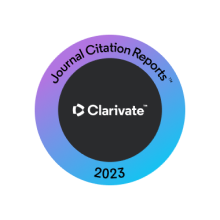Abstract
Aim: The relationship between arrhythmia induction and ablation with palpitation characteristics has been demonstrated in electrophysiological study (EPS) patients. However, there is insufficient data on palpitation characteristics and their sensitivity and specificity. We aimed to identify the relationship between scoring composed of palpitation characteristics with the supraventricular tachycardia (SVT) induction and the success rate of the procedure.
Method: A total of 119 patients, diagnosed as paroxysmal supraventricular tachycardia (PSVT) by electrocardiography, rhythm Holter or symptoms, and underwent EPS, were enrolled in the study. A psychiatrist administered the Hospital Anxiety and Depression Score (HADS) questionnaire.
Results: In SVT induced group, palpitation duration (p ¼ 0.048), palpitation spread to neck (p ¼ 0.004), responsiveness to medication (p ¼ 0.008), induction with stress (p ¼ 0.007), admission to emergency (p ¼ 0.021) and documented PSVT (p ¼ 0.017) were more common. Atropine administration (p ¼ 0.001) was higher, and the Wenckebach cycle length (p < 0.001) was longer in the non-induced arrhythmia group. The presence of dual AV pathways was higher in SVT induced group (p ¼ 0.002). There were no differences between groups in terms of anxiety score (p ¼ 0.192), depression score (p ¼ 0.730), and total psychiatric results (p ¼ 0.280) in the HADS questionnaire. In scoring designed by the palpitation characteristics, the score of four and over predicted SVT induction with 63.6% sensitivity and 92.5% specificity. Radio-frequency ablation (RFA) was performed succesfully in 82.1% of patients with a score of ≥4.
Conclusion: Supraventricular tachycardia induction score obtained from the palpitations characteristics and arrhythmia documentation can be useful in predicting the induction of SVT and the success of RFA.
Recommended Citation
Ozer, Savas; Çetin, Mustafa; Ozyildiz, Ali Gokhan; Gengorü, Ramazan; Turan, Oguzhan Ekrem; Pusuroglu, Meltem; Bahçeci, Bülent; and Erdogan, Turan
(2020)
"A New Scoring System Detecting the Supraventricular Tachycardia Inducibility and Radiofrequency Ablation With High Specificity in Electrophysiological Study,"
Journal of the Saudi Heart Association: Vol. 32
:
Iss.
2
, Article 9.
Available at: https://doi.org/10.37616/2212-5043.1049
Creative Commons License

This work is licensed under a Creative Commons Attribution-Noncommercial-No Derivative Works 4.0 License.




